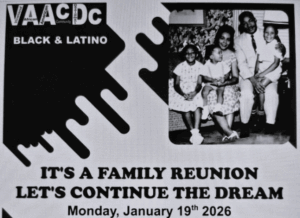Poll: Many NJ Residents Say They Don’t See Diversity in Their Neighborhoods

AC JosepH Media | Rutgers University/Fairleigh Dickinson University
NEW BRUNSWICK/MADISON — Though New Jersey is one of the most diverse states in the nation, not all residents experience its diversity within their own neighborhoods, according to the latest results from the Rutgers-Eagleton/Fairleigh Dickinson University polling partnership released Wednesday (Oct. 2).Â
While most New Jerseyans say their neighbors are diverse in their political views, they report less diversity when it comes to social class and racial and ethnic backgrounds.
Half say they share the same social class as “all†(9 percent) or “most†(42 percent) of their neighbors, while about one in five report being in the same social class as “half†(22 percent) or “only some†(18 percent) of their neighbors. Six percent say they are not in the same social class as any of their neighbors. These numbers are on par with recent national findings from the Pew Research Center.
When it comes to race and ethnicity, four in ten New Jerseyans say “all†(7 percent) or “most†(35 percent) of their neighbors share a similar background, while about a quarter each say “half†(23 percent) or “only some†(26 percent) do. Eight percent say none of their neighbors share a similar racial or ethnic background. New Jerseyans report more racial and ethnic diversity among their neighbors than adults do nationally.
No matter the racial and ethnic makeup of their own neighborhoods, a solid majority of New Jerseyans support the concept of diversity. Fifty-nine percent believe it is important that people of different races and ethnic groups live, go to school, and work closely with each other. Forty percent, on the other hand, believe it is not important, as long as everyone is treated fairly and has the same opportunities. This is a marked shift from when the Rutgers-Eagleton Poll last asked this question in 1999 and in 2004, when views were evenly split.
“New Jersey is a true melting pot, and the solid support we see for racial and ethnic diversity goes hand in hand with the personal experiences many have with this kind of variety in their daily lives,†said Krista Jenkins, professor of government at Fairleigh Dickinson University and director of the Fairleigh Dickinson University Poll. “And even for those who report living in neighborhoods that are less diverse, their support for diversity in everyday life is similarly strong.â€
“On the other hand, a notable segment of the population is isolated from the diversity New Jersey is so well known for and does not see it as a necessity in everyday life,†said Ashley Koning, assistant research professor and director of the Eagleton Center for Public Interest Polling (ECPIP) at Rutgers University–New Brunswick. “Who you live next to and what you believe are significantly influenced by key demographic factors like race, ethnicity, region, socioeconomic status, and age.â€
More than two-thirds of residents (68 percent) approve of the idea that municipalities should be required to actively promote construction of low- and moderate-income housing, as required by New Jersey Supreme Court rulings in 2017 and prior years. This support is largely unchanged from a 2017 FDU Poll.
But the Garden State’s diversity does not always translate to racial and ethnic harmony. Almost four in ten New Jerseyans think there is “a lot†(8 percent) or “some†(29 percent) racial and ethnic tension among residents in their community. Another four in ten (40 percent) believe there is “just a little†tension where they live, while one in five (22 percent) say there is none. These responses are similar to those of a 2004 Rutgers-Eagleton poll.
The Rutgers-Eagleton/Fairleigh Dickinson University Poll of New Jerseyans contacted 1,250 adults between March 7 and 22, 2019. Of those, 621 of were contacted by live callers on landlines and cell phones, and 629 were reached through an online probability-based panel. The combined sample has a margin of error of +/-3.6 percentage points; the phone sample has a margin of error of +/-4.5 percentage points, and the online probability-base sample has a margin of error of +/-5.5 percentage points. Interviews were done in English and, when requested, Spanish. The full analysis, along with the poll’s questions and tables, can be found on the Rutgers-Eagleton Poll website and the FDU Poll website.





